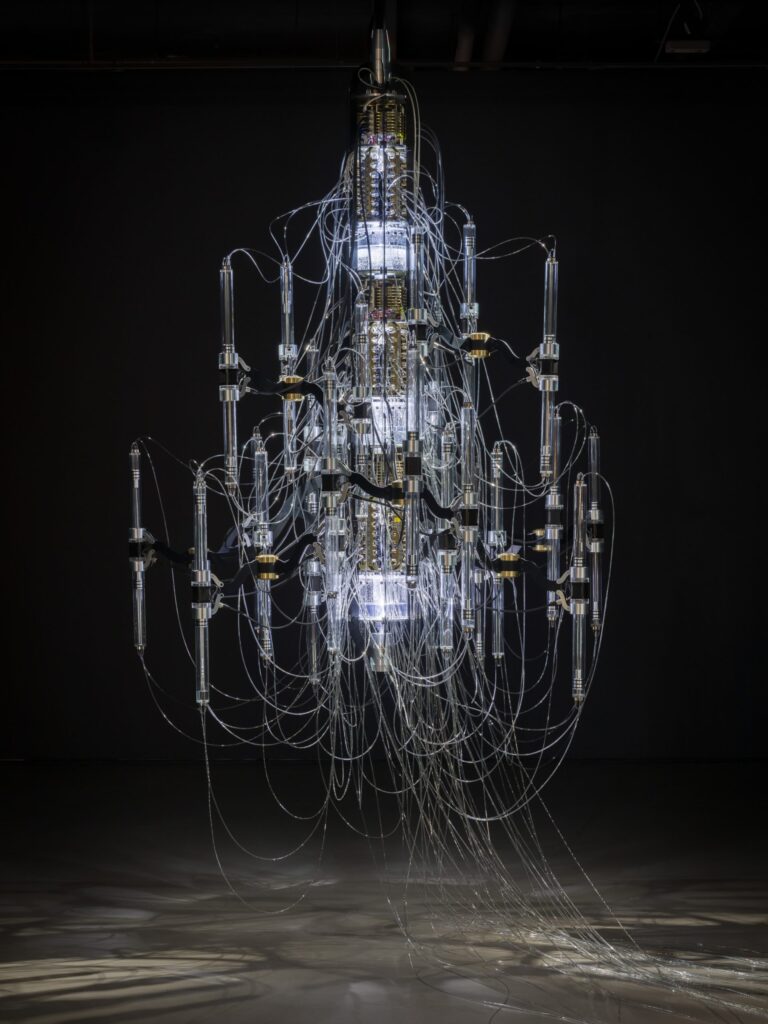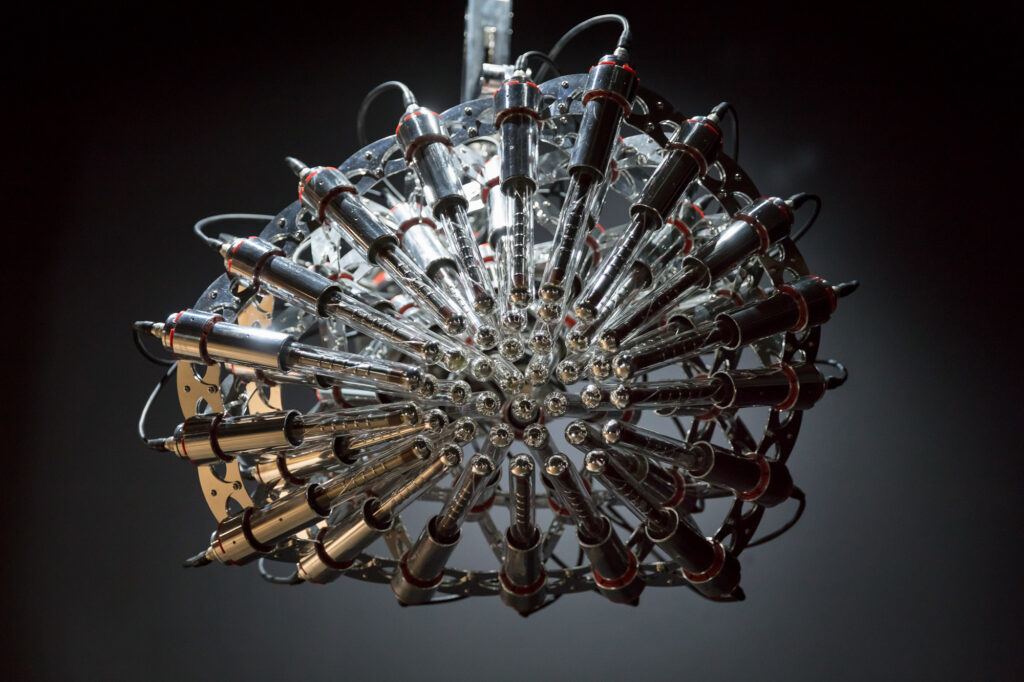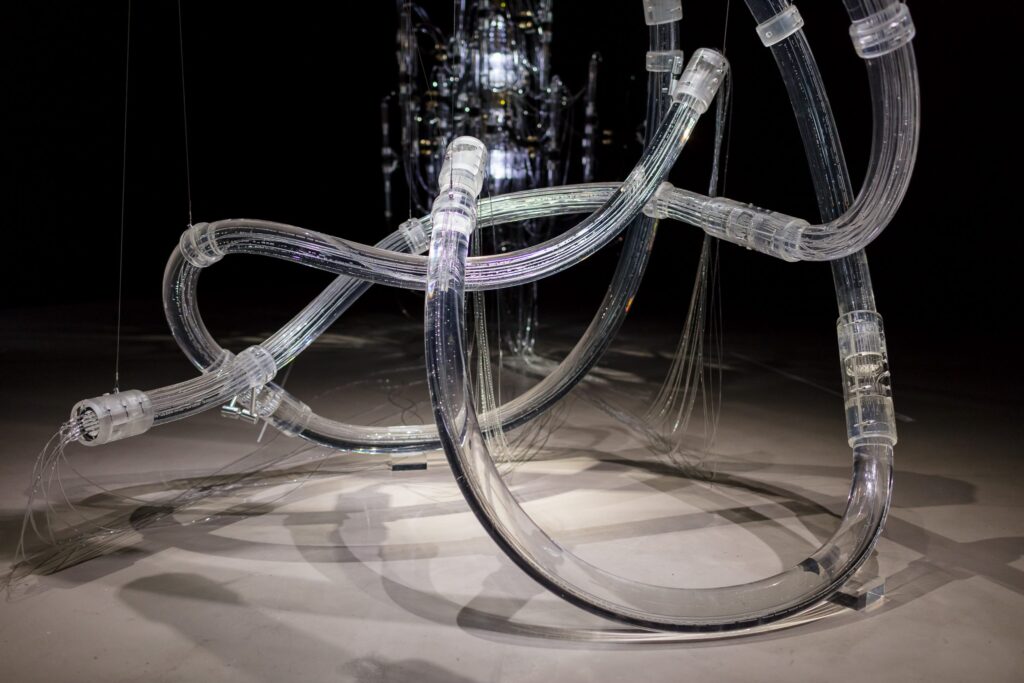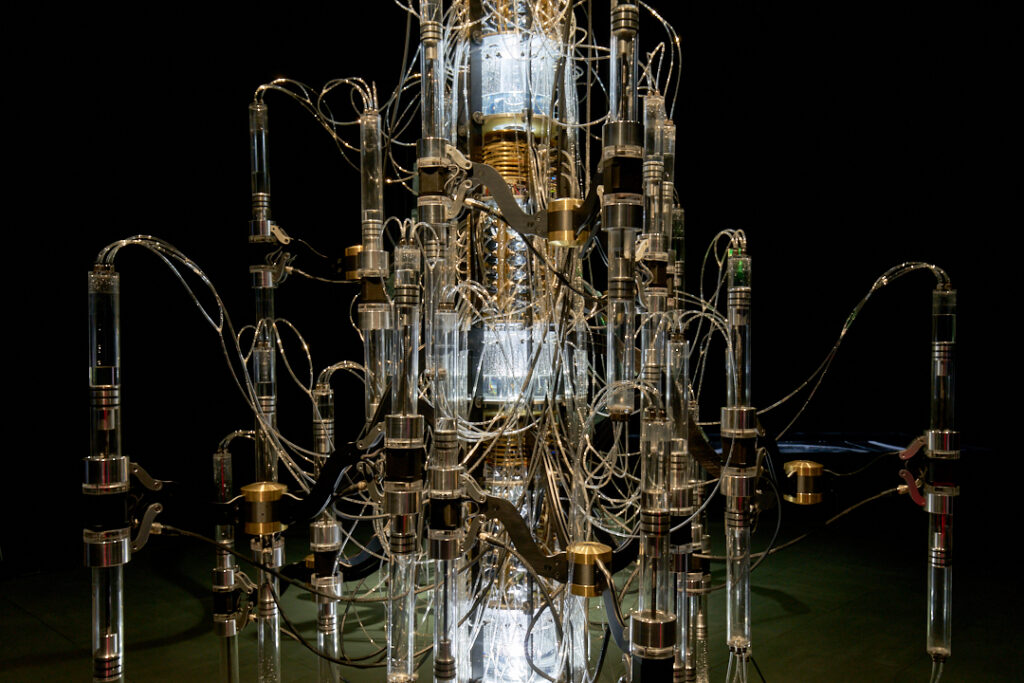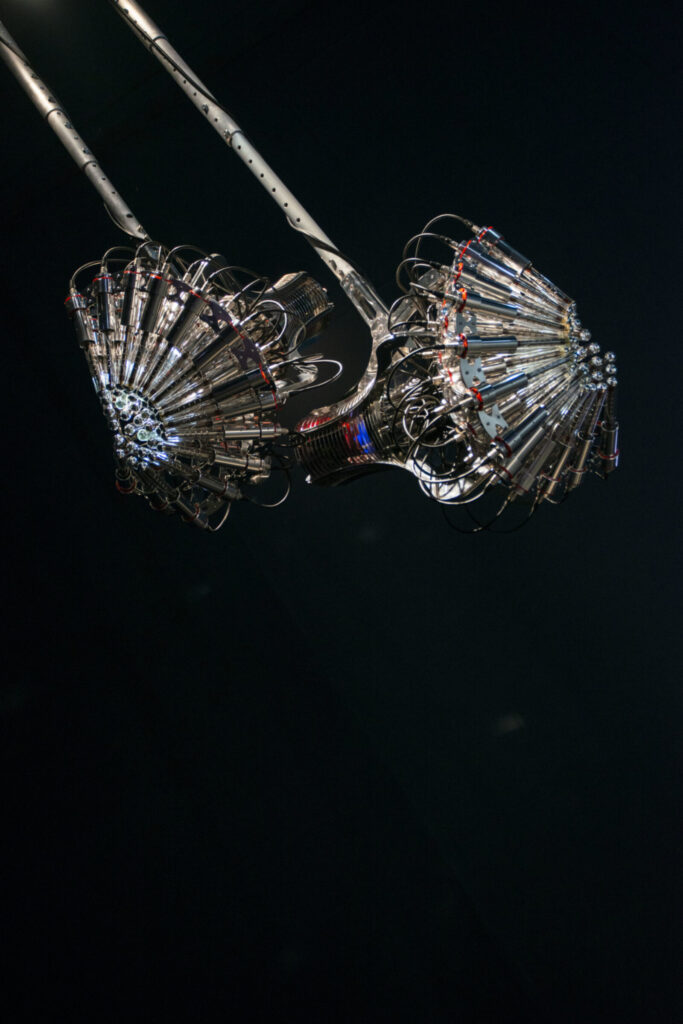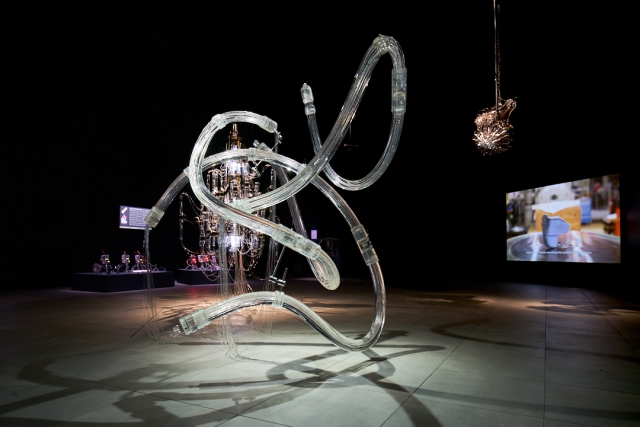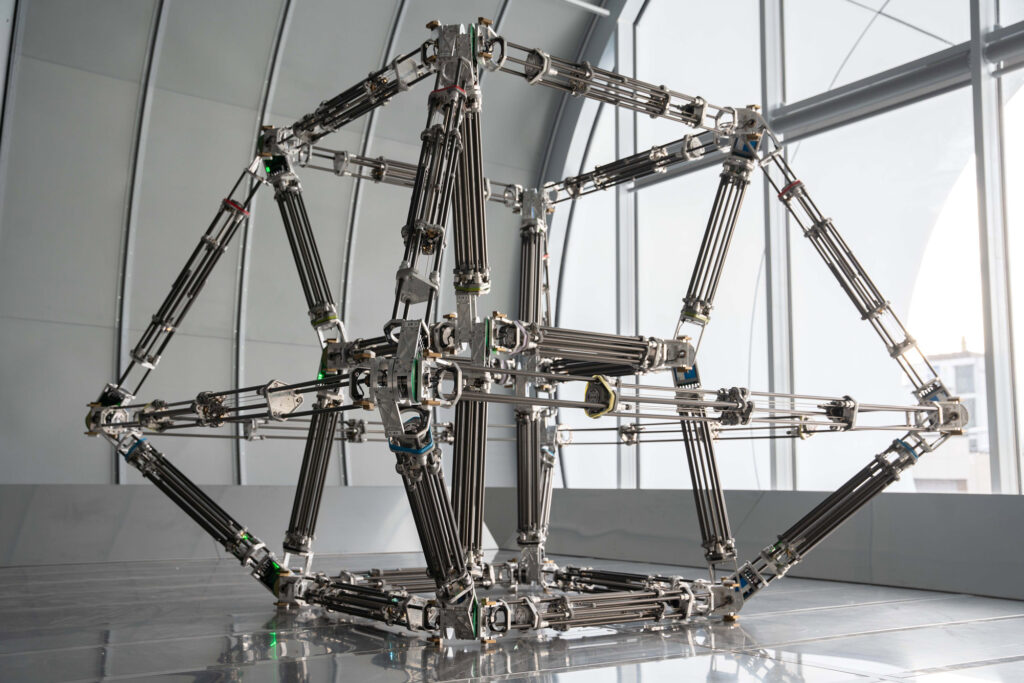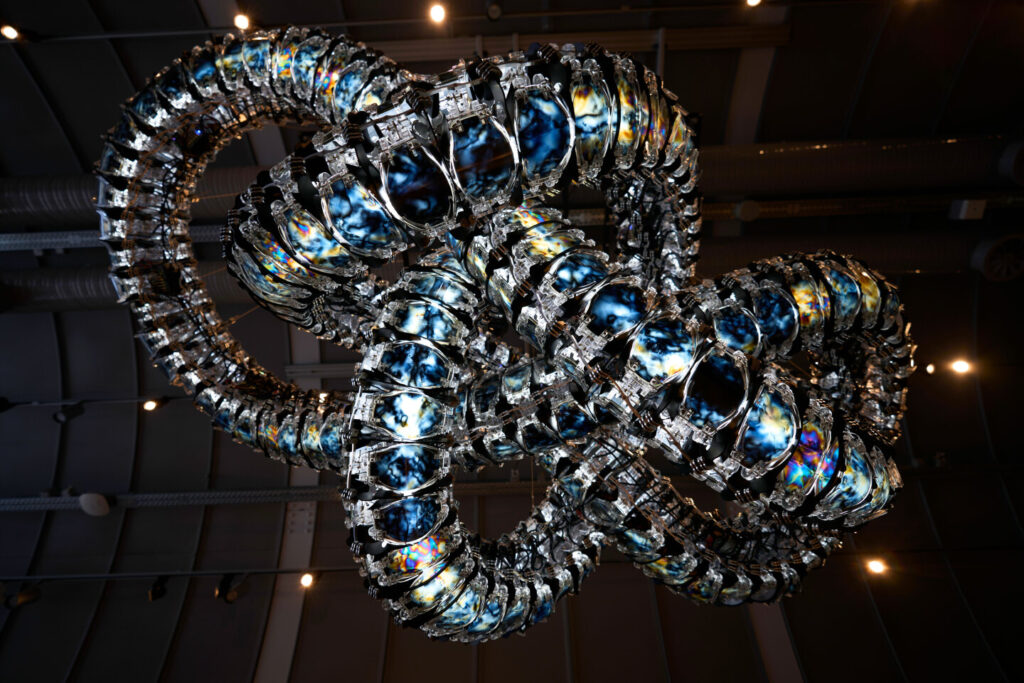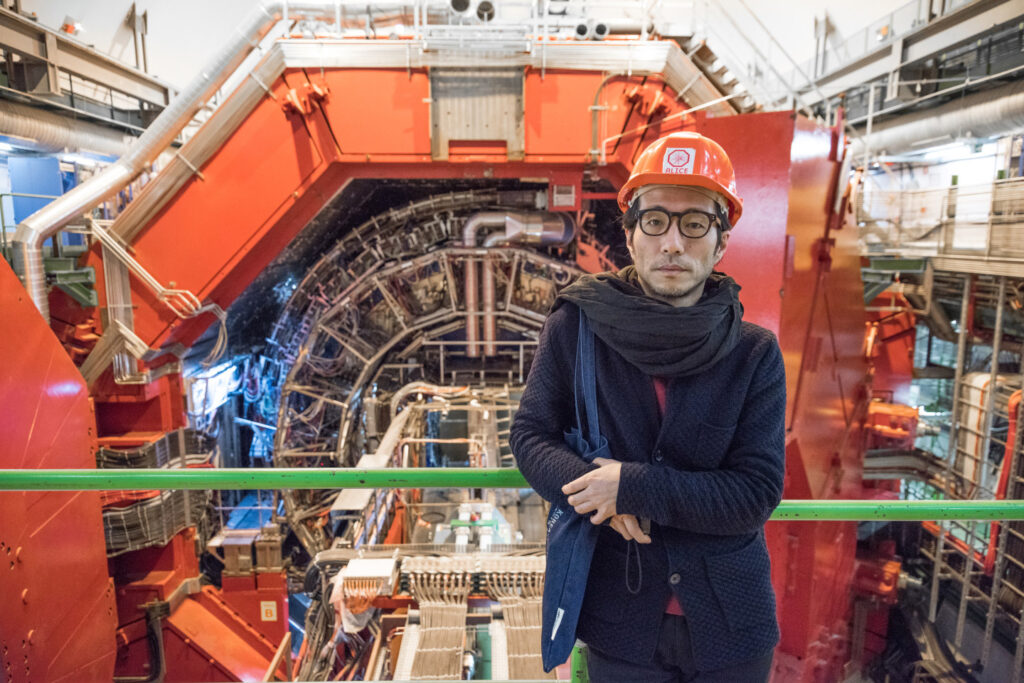- Artist
- Yunchul Kim
- Year
- 2018
- Medium
- Argos (Geiger–Müller tube, glass, aluminium, micro controller, 480 x 400 mm); Impulse (non-pulsating pump, solenoid valve, micro controller, acrylic, aluminium, 2300 x 2000 mm); Tubular (PDMS, micro tube (dimensions variable)
- Artistic Residency
- Collide
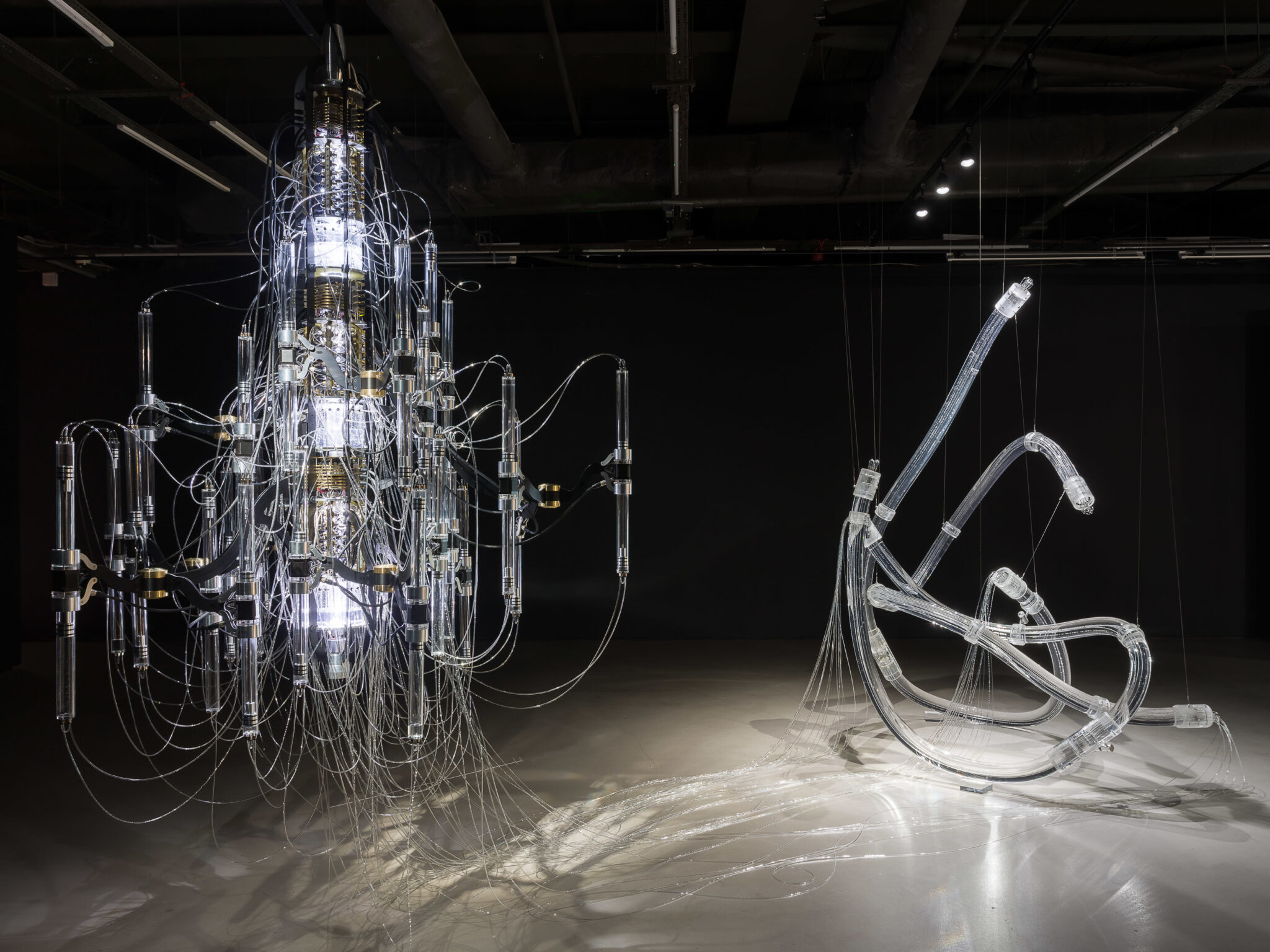
Cascade explores matter by capturing the pattern of muons: i.e. electrically charged subatomic particles.
It does so through an installation comprised of three live elements: Argos, a muon detector; Impulse, a complex assemblage of pumps; and Tubular, an arrangement of tubes through which fluid flows. When muons are detected, a light and connected pumps are activated, triggering the movement of an uncanny, viscous fluid through the sculptural system.
Highlighting the patterns of movements and reactions from invisible particle collisions in a physical reality, Kim explores fluidity as a means of investigating inside materials, and the particular condition of matter. The mysteriously beautiful objects not only visualize a kinetic experiment, but also create a living organism that interacts with its environment, triggered by the detection of these invisible and fundamental particles.
Cascade was developed as part of the Collide Award, a partnership program between Arts at CERN and FACT, and was co-produced by ScANNER.
